Onverse is comprised of a 2D web site, connected to a 3D virtual environment. Together, they form an intriguing new social networking platform with games included – games intuitive enough for non-gamers to learn, but complex enough for gamers to be interested in. You log in using the same account credentials regardless of whether you log in on the web site or the virtual environment. Cross-functionality between the two is increasing even as Onverse gets closer to its official launch date, which is slated for April 15th 2010.
From the moment you start signing up for an Onverse account, you are given some personal artistic choices regarding your avatar’s look, and as you progress into the environment, more and more choices open up to you, including decoration of your own free apartment. Some of the clothing, furniture, and tools are free. Some things you can buy using points, one of the Onverse currencies collected in-world. Some items are available only by purchasing Cash Coins (the other Onverse currency). Apart from clothing, you can also choose animations and emotes to use that further individualise your self-expression and your experience of Onverse.
 There are currently three modes of travel in Onverse: you can teleport between worlds, of which there are three at this time (The Hub, Volcano Island, Ancient Moon); you can travel long distances with the Avatar Cannon (though it’s best if you don’t try to aim for any specific landing point the first few times); and of course, you can always walk.
There are currently three modes of travel in Onverse: you can teleport between worlds, of which there are three at this time (The Hub, Volcano Island, Ancient Moon); you can travel long distances with the Avatar Cannon (though it’s best if you don’t try to aim for any specific landing point the first few times); and of course, you can always walk.
The Hub, Volcano Island, and Ancient Moon each feature outdoor areas and shops. The Hub also boasts apartment buildings, a casino, a nightclub, and an amphitheatre. Volcano Island and Ancient Moon each have themed housing communities – instead of having your apartment in an instance run just for you, apartments are grouped together in lots of 40+ to an instance. You can meet new friends or encourage your existing friends to become your neighbours.
I was initially unimpressed by Onverse. That was until I started doing a little digging, and discovered how little time it had been in development for, how few people were working on it, and the tiny budget that Onverse has currently. This is the team listing: Steve Pierce – “The Designer”; Wes Macdonald – “The Engineer”; Eric Hoefer – “The Artist”; Ben Steele – “The Animator”; Scott Mitting – “The Web Engineer”. The social networking component alone was built in under a month; the virtual environment in a comparative period of time for its size. Many parts of the coding for the game world, including the back-end server, have been written from scratch. The team also needed to learn to create avatar and clothing meshes. Other things that impressed me:
1. There’s a client available for the Mac that does not lag behind the Windows client
2. The client for the virtual environment can be run on computers with relatively low specs, and they have been streamlining their software and reducing the RAM footprint so that machines with even lower specifications can still run it.
I was also intrigued by the Onverse method of filling the world with music: signing on bands and artists who allow their music to be played in-world. Indeed, “Onverse is always looking for new bands who would like to showcase their talent inside our world. If you would like to be considered, contact us at music@onverse.com.”
If the use of casual games and social interaction on Facebook is any indication, then Onverse, with its more engaging environment, combined with socially interactive opportunities, should do extremely well. I believe that there will need to be a range of add-on game types if the product is to appeal to gamers and casual gamers alike, but I feel that the trend in Onverse is towards such a range. I look forward to monitoring their progress.

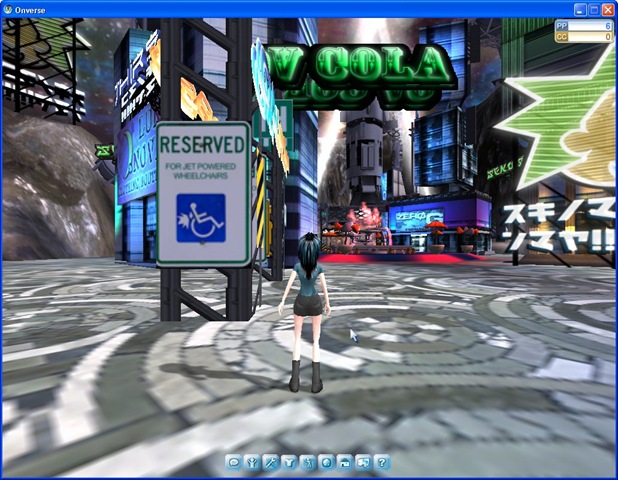
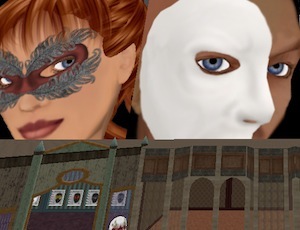
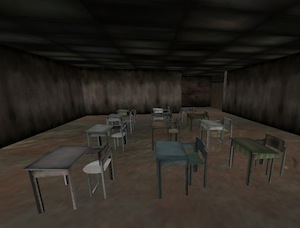
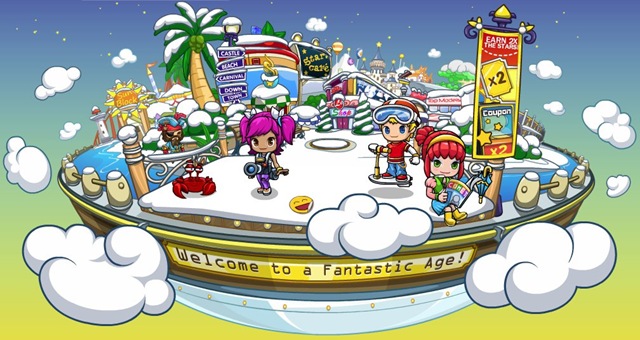
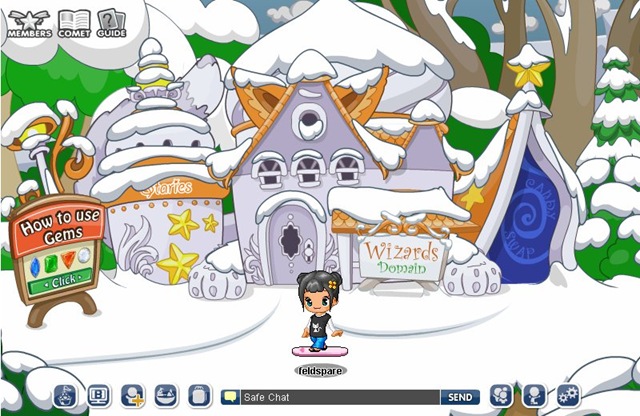
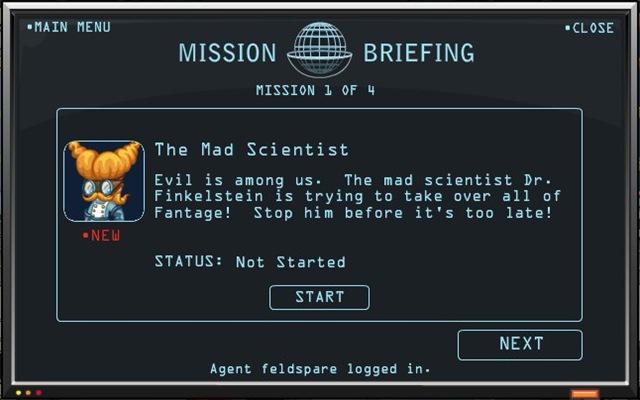
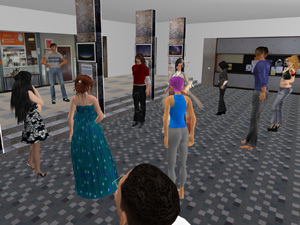 The mini-launch of the UWA sims occurred in August, well before the campus was complete. Jayjay Zifanwe and Ted Snell worked feverishly for several weeks and at least one whole weekend to ready the Astronomy art gallery in the SL Physics building for the occasion.
The mini-launch of the UWA sims occurred in August, well before the campus was complete. Jayjay Zifanwe and Ted Snell worked feverishly for several weeks and at least one whole weekend to ready the Astronomy art gallery in the SL Physics building for the occasion.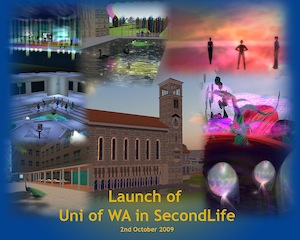 On the launch day of the UWA sims, 40 people attended the ceremony as avatars in Second Life, and 120 people packed into a RL space to attend. The people in the physical space were able to follow the proceedings in SL; the SL folk able to view the video kindly relayed the action for the other people unable to view the video through SL.
On the launch day of the UWA sims, 40 people attended the ceremony as avatars in Second Life, and 120 people packed into a RL space to attend. The people in the physical space were able to follow the proceedings in SL; the SL folk able to view the video kindly relayed the action for the other people unable to view the video through SL.

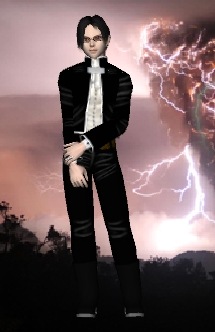
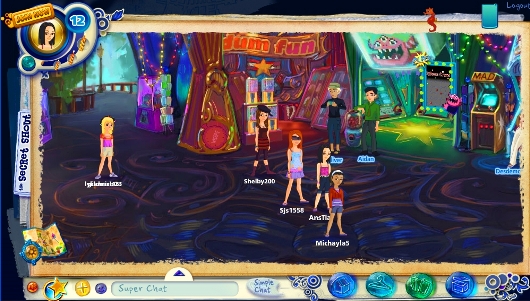
Recent Comments